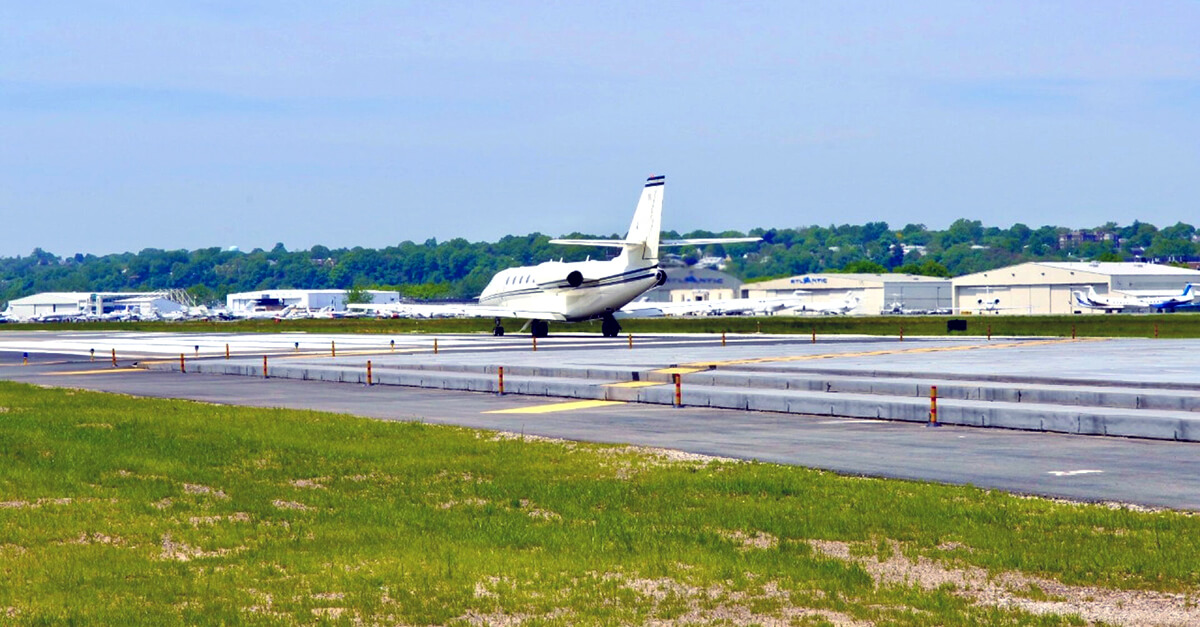
July 2, 2020
The thinning of commercial traffic nationwide during the COVID-19 pandemic has heightened noise awareness in the communities that surround airports, including New Jersey’s Teterboro Airport (TEB) – one of the busiest general aviation airports in the country due largely to its proximity in New York City.
“It may seem counterintuitive in wide open skies, but operators are encouraged to be even more vigilant about following voluntary noise abatement procedures,” said Gabriel Andino, TEB’s manager of noise abatement and environmental compliance, and chair of the NBAA Access Committee Airports Working Group.
Metropolitan New York’s LaGuardia Airport (LGA) and Newark Liberty International Airport (EWR) are no exception to the dramatic drop in operations; some days operations at TEB surpass those at EWR and LGA.
To help alleviate noise, Teterboro is encouraging pilots to request the preferred Runway 19 departure between 10 p.m. and 7 a.m., as this runway allows for departures over less noise sensitive areas.
Runway 19 departures conflict with Newark arrivals, which normally leads to delays while ATC creates a departure gap in the Newark inflow, which is lighter at night, Andino explained. “With traffic being down pretty much across the board during the pandemic, it’s really easy to depart from Runway 19 at almost any time of day without incurring a delay.”
Pilots desiring to depart Runway 19 must still make the request before taxi at any time of day.
Exceeding Teterboro’s mandatory noise limits by 1 dB (A) earns a violation; three violations in two years bans the offender from the airport. Runway 1/19 has TEB’s highest maximum noise level, 95 dB (A), at all times. The maximum noise levels for Runway 6/24 is 80 dB (A) between 10 p.m. and 7 a.m. and 90 dB (A) between 7 a.m. and 10 p.m. TEB highly recommends using Runway 19 because it reduces the risk of exceeding the 80 dB(A) limit and avoids noise sensitive communities.
To stay within the maximum noise limits, operators must use FAA-approved procedures, manufacturer recommendations or NBAA-recommended noise abatement departure procedures. The airport urges voluntary restraint of all nonessential operations between 11 p.m. and 6 a.m.
TEB is receiving three new RNAV approaches, Andino said. “RNAV Y (GPS) 19 overlays an existing ILS with an RNAV; RNAV (GPS) X RWY 19 is an offset approach to Runway 19 that will be made available to address noise concerns north of the airport. RNAV (GPS) RWY 24 provides an instrument approach to Runway 24, a runway that previously didn’t have one. RNAV (GPS) Y 19 and RNAV (GPS) RWY 24 have been published, but an additional environmental review has pushed RNAV (GPS) X RWY 19 to the first quarter of 2021.”
For a number of reasons, Runway 19 cannot become the default departure runway, he said. First among them is the airspace conflict with EWR. The Part 150 noise survey that is now “taking an unprecedented look at four area airports – JFK, LaGuardia, Newark, and Teterboro—as a group,” may open the door to Air Traffic Control utilizing the runway more during nighttime hours. Given the complexity of the airspace, changes must be carefully considered.


 International Business Aviation Council Ltd.
International Business Aviation Council Ltd.